Peach leaf curl aphid, Brachycaudus helichrysi
| Symptoms of damage |
- Nymph and adults suck the sap from leaves and petioles
- Affected leaves become curled and fall
- Blossoms and young fruits drop pre maturely
- Affected fruit setting
|
| Identification of pest |
- Aphids are dark green to chocolate brown coloured
|
 |
| Adult |
|
Green peach aphid, Myzus persicae
| Symptoms of damage |
- Nymph and adults suck the sap from leaves , new shoots, fruits and flower buds
- Infested leaves become pitted and curled
- Young fruits are shriveled and drop pre maturely
- Fruit setting affected in severe infestation
- Its transmits plum pox virus
|
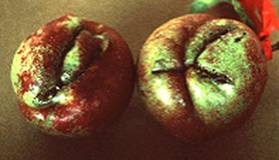 |
| Plum pox virus |
|
| Identification of pest |
- Adults are pale yellowish green or pink with three dark lines on the back of a abdomen
|
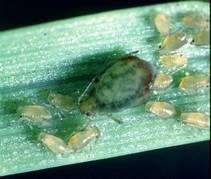 |
 |
| Nymphs |
Adults |
|
| Management |
- Remove and destroy the damaged plant parts along with nymphs and adults
- Encourage parasitoid, Aphelinus mali and predators, Coccinella septumpunctata and Bacillus eucharis
- Spray dimethoate 0.03% or methyl demeton 0.025%
|
Peach twig borer, Anarsia lineatella
| Symptoms of damage |
- Caterpillar damages twigs of peach, plum and apricot
- Eggs are laid on shoots, twigs and fruits
- After egg hatching the larvae bores into pith of twigs and fruits
- Fruit damage is more serious
|
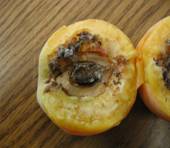 |
| Damaged fruit |
|
| Identification of pest |
- Larva – matured larvae reddish brown in colour and has a black colour head
- Adult – brown in colour and black colour line present on the both forewings and hind wings
|
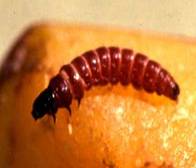 |
 |
| Larva |
Adult |
|
Peach borer, Sphenoptera lafertei
| Symptoms of damage |
- Beetle feed on leaves
- Young grubs bore into and feed inside bark and make irregular galleries
- Gum globules appear at the points of entrance on bark
|
| Management |
- Collect and destroy the damaged shoots and branches
- Swab trunk with carbaryl 50 WP at 0.2%
- Spray malathion 0.1% .
- Field release of some natural enemies like gray field ant, Formica aerata, chalcid wasps, Copidosoma (=Paralitomastix) varicornis and Hyperteles lividus,
- Spray application of Bacillus thuringiensis (Bt) products have been effective if applied when larvae are first noticed and before they tunnel into twigs, buds or fruit.
- Spray application of following insecticides
|
| Timing |
Product |
| pink (peach) |
Azinphos-methyl (Guthion or Sniper 50WP)
or phosmet (Imidan 50%WP) |
petal-fall
(peach and apricot) |
Thiodan, Guthion, Sniper, Imidan |
petal-fall
peach only |
or deltamethrin (Decis 5 EC) |
husk-fall
(apricot) |
Thiodan,Guthion, Sniper or Imidan |
summer
(apricot and peach) |
Thiodan,Guthion, Sniper, or Imidan |
|
San jose scale, Qudraspidiotus perniciosus
| Symptoms of damage |
- San Jose scales cause injury by feeding on twigs, branches, and fruit; they may also inject salivary toxins while feeding.
- Heavy populations on the bark can cause gumming and kill twigs, branches, and entire trees if left uncontrolled.
- A characteristic, red halolike discolorationoften forms around the insect on small twigs or infested fruit.
- Fruit with haloes will be culled because of its unsightly appearance.
|
 |
 |
| Scales on fruits |
Pink colour discolouration on stem |
|
| Identification of pest |
- Female scale is yellowish orange, round, slightly convex and raised a little at the centre with a black pustule
- Males are small and more linear shape
|
|
| Management |
- Select nursery stock free from scale infestation
- Fumigate nursery stocks with HCN gas or methyl bromide
- Spray application of systemic insecticides like phosalone 0.05%, fenitrothion 0.05% and methyl demeton 0.025%
- Field release of coccinellid predators likeChilocorus nigritus and parasitoid Encarsia perniosi
|
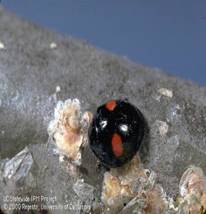 |
 |
| Chilocorus nigritus |
Encarsia perniosi |
|
SOURCE
www.ipm.ucdavis.edu, www.apidweb.com, ag.arizona.edu
|

